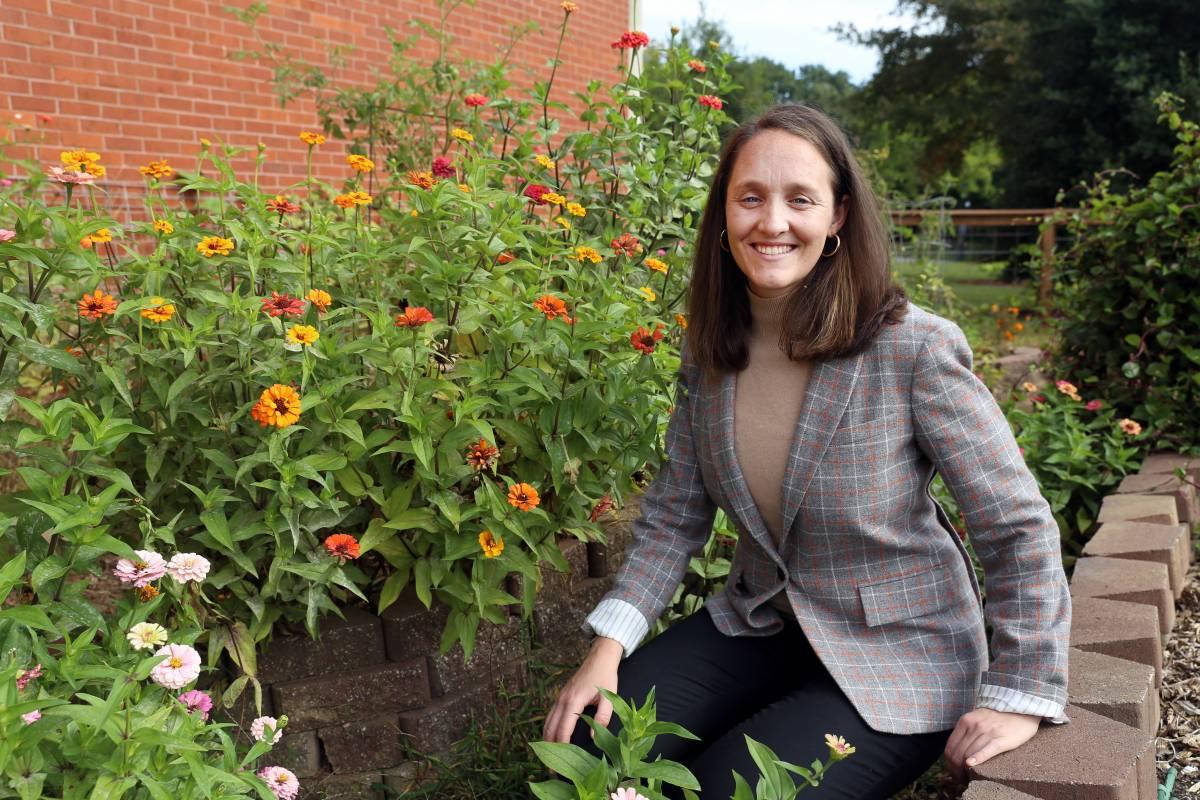Marta Hatzell’s research on global sustainability in the fields of food, water and energy seeks to solve the world’s hunger problem through environmentally sustainable fertilizer

Across the world, people young and old, close to home and far away, go to bed hungry. Moderate or severe food insecurity affects more than 25 percent of the global population, or about 2 billion people.
In order to help alleviate this food scarcity, the world demand for fertilizers is consistently on the rise, having increased nearly every year for the last two decades. Estimates show that foods produced from nitrogen fertilizer support about half of the world’s population.
Some of the concerns surrounding this reliance are that nitrogen fertilizer is challenging to make and has a negative impact on the environment. The base of most nitrogen fertilizers is ammonia, which can only be made at about 100 locations around the world. This current system requires a huge infrastructure for both manufacturing and shipping, and it can be highly dangerous as well — the explosion at a warehouse in Beirut in August 2020 involved the storage of ammonium nitrate.
Enter Marta Hatzell, assistant professor at Georgia Tech in the George W. Woodruff School of Engineering, whose current research looks at how to make nitrogen-based fertilizer easier and safer, as well as how to make its use more sustainable and environmentally friendly.
A Bumper Crop of Sustainable Solutions
Hatzell’s inclination toward mechanical engineering began when she realized the impact that her research and innovations could have on the energy industry.
“Growing up, I was always interested in energy and how we could move toward a more sustainable energy infrastructure based primarily on renewables,” says Hatzell. “That sparked my drive to work in environmentally sustainable technologies in the areas of food, energy and water.”
Hatzell’s goal is to consider the interplay of these three areas as she creates solutions for real problems affecting people all over the world. One way these three realms combine is through the use of synthetic nitrogen fertilizers — created using energy and water — that help mitigate worldwide hunger by producing more food safely, effectively and sustainably.“In the 1900s, there was a scientific race to figure out how to make synthetic nitrogen for fertilizer because we realized that we were going to run out of food for the growing world population,” said Hatzell.
“It was a very challenging process, but after two Nobel Prize-winning breakthroughs, researchers figured it out, discovering a chemical process that uses high pressures and temperatures to convert nitrogen from the air into ammonia. Now, our grand challenge is to make it less environmentally harmful.”
Hatzell and her team are working on electrochemical technology that can make ammonia in low-pressure, low-temperature situations using nothing more than air, water and cheap mineral-based catalyst like titanium dioxide, which is found in many mineral sunscreens. This method of manufacturing synthetic nitrogen can be carried out inexpensively and in more places around the world, meaning the shipment and long-term storage of volatile ammonium nitrate will be lessened.
Closing the Loop
In addition to making the production of fertilizer more sustainable, Hatzell also seeks to create a way to capture some of the excess nitrate from the use of fertilizers before it enters back into the environment.
“A percentage of the nitrogen contained in fertilizers is absorbed and used by the plant, but not all,” says Hatzell. “Excess nitrates can run off into surrounding soil and water, causing health concerns for the people and animals who come into contact with it.”
Nitrate runoff is linked to pollution in drinking water, poisoning of various plants and animals and atmospheric emissions that damage the Earth’s ozone layer.
Using electrocatalytic or membrane-based technologies, Hatzell seeks to capture and convert this runoff from the fertilizer to either remediate the nitrate back into ammonia to be reused or by altering it into inert nitrogen gas that would be released harmlessly into the environment.
“We need fertilizer to feed the world — it’s a simple fact,” Hatzell said. “By creating these decentralized technologies and providing fertilizer in places where we have food shortages, we could increase agricultural yields, maximize productivity and promote equity in nutrient distribution — all in an environmentally conscious way.”